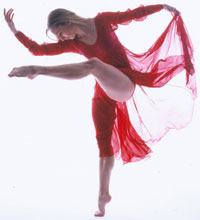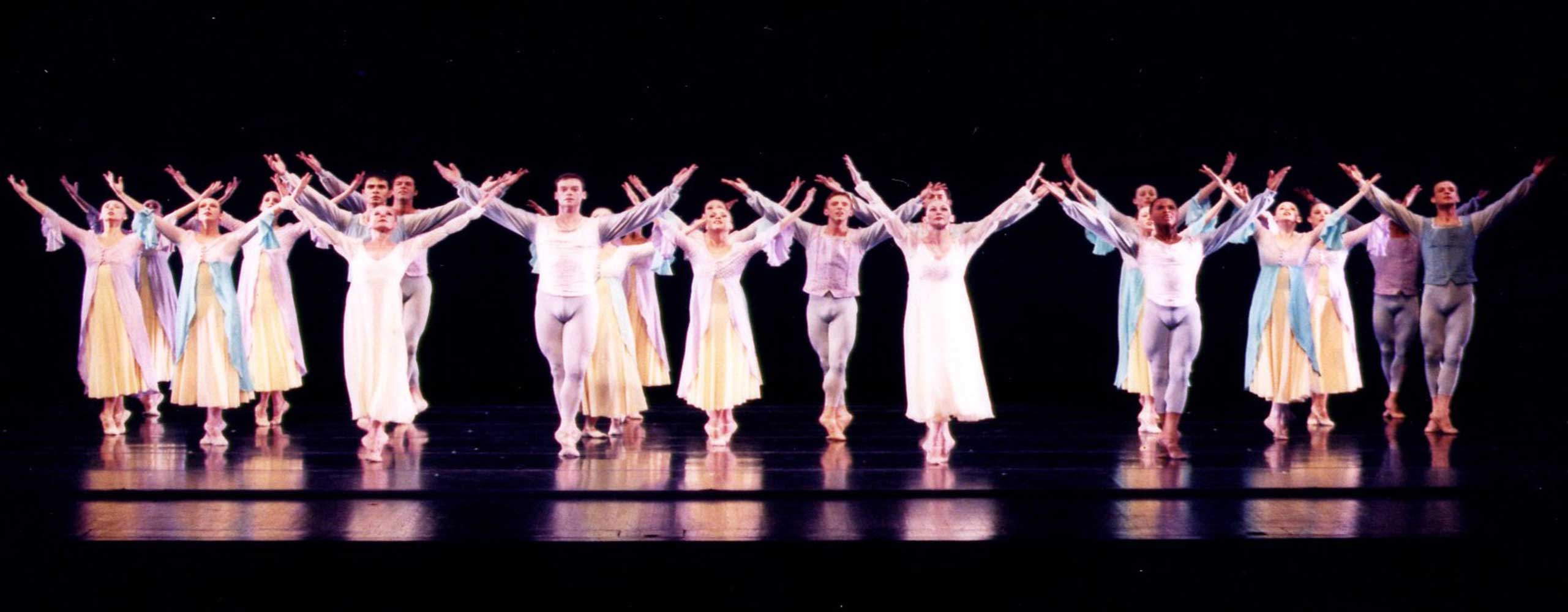
Choreography: Paula Weber
Music: Carl Orff
Munich-born Composer Carl Orff believed that rhythm, pitch and the urge to dance were instinctive in the human species. In 1924, he founded a school for eurhythmics based on the pedagogic principle that no child is non-musical. As a composer he sought to merge music, movement, voice and language to form an exhilarating theatrical experience. Carmina Burana is his best-known composition. The work is composed of 25 poems and student songs in medieval Latin and Low German and is divided into a prologue, four large sections, “Springtime,” “On the Green,” “In the Tavern” and “The Court of Love,” and an epilogue.
Many people have experienced Carmina Burana in orchestral and choral presentation, but few have been privileged to see a choreographed production. This critical element completes Orff’s vision of the work as “total theatre.”
Rhythm is the principle characteristic of Carmina Burana. Hypnotic, repetitive, driving, frenzied, sonoral, and the patterns and variations are thoroughly seductive. Like the music and dance of many Native American societies, the earthly vocalizations, essential harmonics and heavily percussive musical structures evoke a sense of union between the performers and the audience and forge a link between the human life cycle and the earth’s seasonal change.
Kansas City Ballet’s production of Carmina Burana is choreographed by Paula Weber. Ms. Weber choreographed Carmina Burana previously in Milwaukee, and at the urging of Eph Ehly, choral director at UMKC for an April 1994 performance series by UMKC dance students. She was thrilled when asked to set Carmina Burana for Kansas City Ballet. The skill and fluidity of this professional company allowed for her to further articulate the complex precepts of her choreography. The Kansas City Ballet premier of Carmina Burana was in April 1996.
To arrive at a choreographic approach to Orff’s masterwork, Ms. Weber studied the history from which Carmina Burana is said to derive. The poems were selected by Orff from writings by medieval poets known as “goliard,” who wrote satirical Latin verse and performed as minstrels and jesters. Though it is often assumed that most medieval musical traditions were linked to Christianity, it is in fact the case that much of what was written and performed was secular and much of that was blatantly profane, reveling in earth-bound, often vulgar, pagan ritual.
The poems were preserved through the centuries by Benedictine monks. Weber relied on the metaphoric presence of the monks as she developed the delicate thread of a story line to guide her choreography. “The monks have poems,” she said, “They read the poems, and they think the poems.” This image of the monks’ thinking the poems is the spiritual force driving the work forward. They appear on the stage, in the ominous opening passage, as dark-cloaked figures. Springtime is drawing near, and the monks must release the poems from their minds for the earth to awaken to season growth. The monks remain on stage, sitting, thinking, while four unrobed, revealing nude-appearing bodies in flesh colored unitards. The cycle of life begins to play itself out as Adam and Eve, the wheel of fortune, good and bad luck, until the end of the work, at the onset of winter, when the poems must be reabsorbed into the minds of the monks, to be preserved for the next seasonal cycle.
Kansas City Ballet Premiere: April 28, 1996
